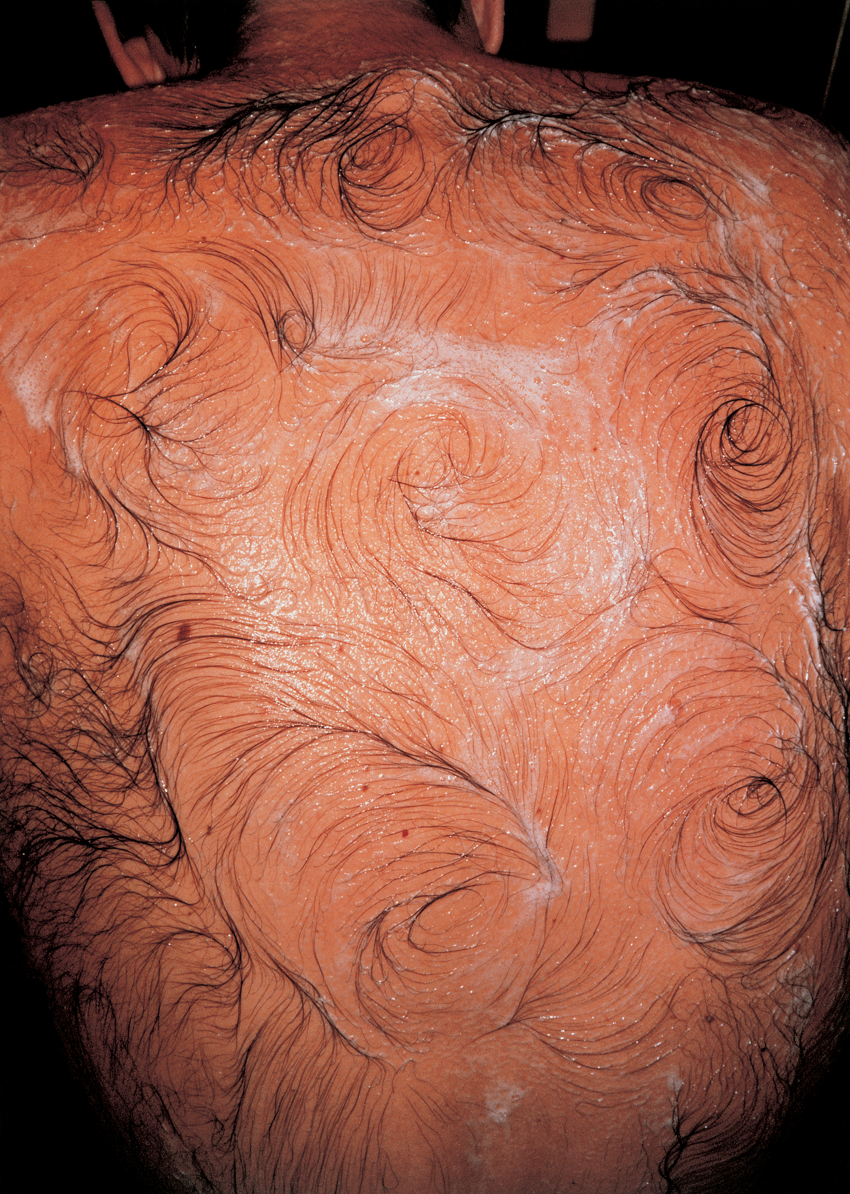
Mona Hatoum, Van Gogh’s Back, 1995, Chromogenic color print,19 11/16 x 14 15/16 inches (50 x 38 cm). Gift of Barbara Lee, The Barbara Lee Collection of Art by Women. Courtesy Alexander and Bonin and White Cube. © Mona Hatoum
Based in London, over the past thirty years Palestinian Mona Hatoum has frequently used the body, including her own, in photographic, filmic, and performative work that explores issues related to identity. Since the 1990s, she has also transformed common household objects—rugs, cots, and kitchen utensils—into threatening large-scale sculptures. Items from the domestic territory become ambiguous and potentially dangerous, evoking themes of exile, displacement, and conflict.
In Van Gogh’s Back, the conversion of the ordinary (hair) into the extraordinary (art) is uncharacteristically playful. Throughout her career, Hatoum has used and referenced hair, applying strands to paper as a form of drawing and integrating the material into sculptural work. While hair is often associated with femininity and sensuality, once removed from the body it takes on an abject quality. In Van Gogh’s Back, Hatoum uses the biomaterial in yet another way. With what appears to be soap, the long hairs on a man’s back have been shaped into curls that reprise Vincent van Gogh’s signature thick, swirling brushstrokes in his seminal Starry Night, 1889. As in Hatoum’s early performance work, the human body functions as canvas and sculpture, here to amusing effect.
Van Gogh’s Back is a valuable contribution to the ICA/Boston’s holdings of Hatoum’s work and makes a valuable contribution to the expanding collection of photography. In its humor and art-historical referencing it complements collection works by Yasumasa Morimura and Cindy Sherman.
2014.24